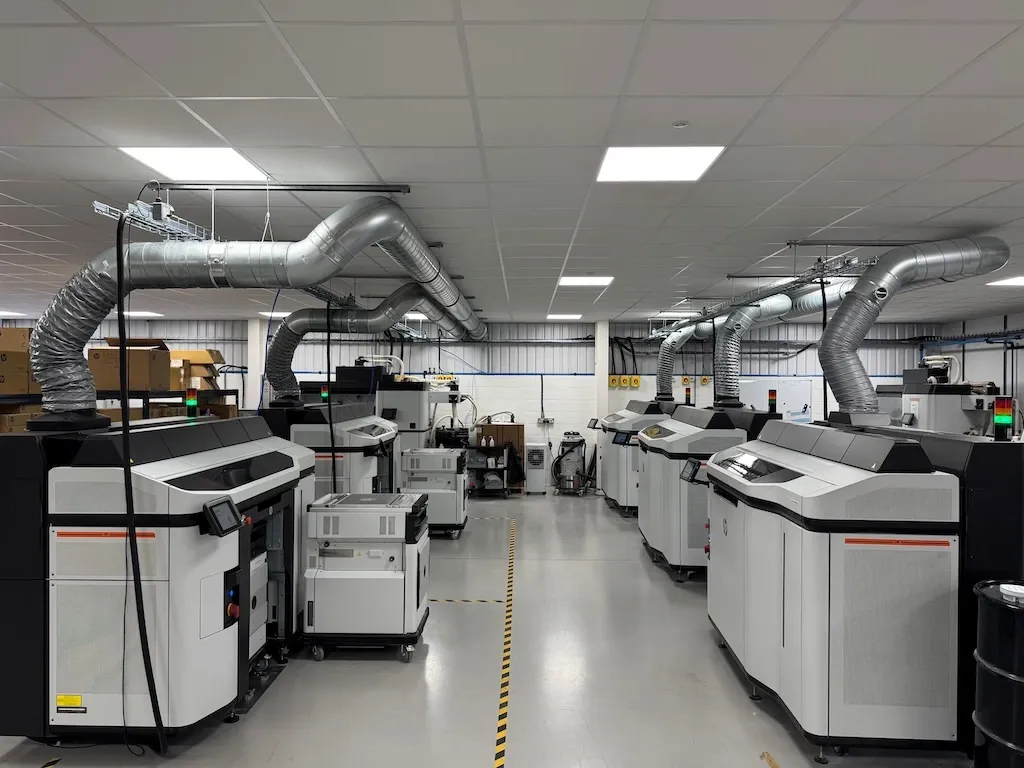Expert warns UK MoD could lose £110M savings without AM adoption

The UK defence sector is missing out on major savings by failing to adopt additive manufacturing as a mainstream production method, an industry leader has warned.
Highlighted at the DSEI defence and security exhibition in London last week, Craig Pyser, chair of Additive Manufacturing UK (AMUK) and Chief Executive of Portsmouth-based AMufacture, said a persistent “knowledge gap” between manufacturers and defence procurement teams is preventing the UK Ministry of Defence (MoD) from making use of technologies that are already proven at scale.
The MoD’s own Advanced Manufacturing Strategy identifies AMg as a way to strengthen supply chains and cut costs. A Defence Innovation Unit study cited in the strategy estimates that if 15% of the MoD’s inventory were produced through additive processes, the department would save £110 million over the next 15 years, with annual savings of £35.5 million after that.
Pyser said those figures remain out of reach unless decision-makers move on from viewing 3D printing as a prototyping tool.
“The challenge isn’t the technology,” he said. “Decision-makers are still thinking about 3D printing as it was ten years ago, not as the production manufacturing process it has become.”

MoD inventory strains under obsolescence
The MoD manages an inventory of more than 1.3 million items, with obsolescence identified in its strategy as the top supply chain problem. Pyser argued that additive manufacturing can help address this issue by providing alternative sources for discontinued parts and speeding up the production of new ones.
He pointed to unmanned aerial vehicles and drones as areas where the technology could offer tactical advantages. In that context, the US military has already demonstrated complete 3D printed drone systems manufactured and deployed in less than a day.
Pyser said the UK already has firms capable of meeting this demand. Among those companies is AMufacture, which Pyser co-founded with former naval architect and Olympic sailor Will Howden. Based in Portsmouth’s industrial cluster alongside BAE Systems, Airbus and Lockheed Martin, the firm has invested in HP Multi Jet Fusion (MJF) technology and automation to deliver full-scale AM production.
It supplies aerospace, automotive, medical, marine and defence clients with engineering-grade parts in materials such as PA12 and TPU, supported by a digital engineering dashboard that provides customers with real-time project tracking.
The company is ISO9001 certified and offers a full range of AM processes, including MJF, digital light processing (DLP), selective laser sintering (SLS), stereolithography (SLA) and fused deposition modeling (FDM).
With the government committing an extra £2.9 billion to defence in 2024 and planning to raise spending to 2.5% of GDP by 2027, Pyser said there is now a pressing need for more resilient supply chains. The shift from “just-in-time” to “just-in-case” supply models will demand flexibility, and he believes additive manufacturing should be at the centre of that change.
“There is a real wealth of 3D printing talent in the UK,” he said. “If defence switches on to the fact, it can push for those £110 million savings whilst also driving massive economic impact to some of the country’s fastest-growing manufacturers.”

Global adoption shows mixed progress
The UK is not alone in facing hurdles around the adoption of additive manufacturing in defence. In India, Ashok Varma, Senior Advisor for metal AM at the Defence Research and Development Organisation (DRDO) called for decisive policy reform and significantly higher investment. He noted that India’s Ministry of Defence currently spends less than $5 million annually on AM technologies, compared with an estimated $500 million by the US Department of Defense (DoD).
Despite being one of the world’s largest defence budgets, bureaucratic inertia and limited strategy have left India at just 0.5% of the global 3D printing industry. Varma argues that with proper applications, lead times could be cut by more than 70% and costs halved on critical parts such as titanium pressure vessels, but only if procurement and policy catch up with technological potential.
Across the Atlantic, the U.S. is far ahead in investment but continues to face its own hurdles. At this year’s AMUG Conference, a panel of experts with military and industry backgrounds warned that acquisition delays, fragmented digital infrastructure and inconsistent training are undermining AM adoption.
Even when hardware is in place, procurement cycles can take years, by which time the technology risks being obsolete. The U.S. Navy has recently made additive a “program of record” under its maritime industrial base, securing regular funding and staffing, but panellists emphasised that standardised training, licensing of digital files, and clear liability frameworks remain unresolved bottlenecks.


